#HURRIAN
Explore tagged Tumblr posts
Text

Last night’s stinky writing session: Ninurta can’t resist taking a shot at the Hurrian gods.
Siege of Aleppo comic.
#bronze gods#pantheon#bronzegods#mythological fiction#ninurta#tessub#hurrian#The pantheon universe is a series of comic strips so this is how I write them in preparation for the comic#lore#This is actually set after the Battle of Kadesh story#it’s the Seige of Aleppo that happens when Assyria makes eyes at aleppo while Hatti and Mitanni are exhausted from fighting Egypt#text corpus
0 notes
Text
Nice that for once it isn't an economic document. Not so nice that it's about a catastrophe.
191 notes
·
View notes
Note
I have heard tell of the saddest, wettest Maglor and I see the rumors were well-founded. Please please tell me more of this fucking awful roadtrip. How long until Maglor calls this weirdo a bitch. Can I collect bets on that point
calls him a bitch to his face, or in his head? cause he hasn't worked up the nerve to say it out loud yet, I don't think, but there might be some rude names in the narration coming up
The golden stranger replied unhelpfully, “In the city he rules, to the south-east of here,” as though literally the whole continent weren’t south-east of there. I had heard of Ost-in-Edhil, though, and couldn't actually see a reason not to go there. Not if Celebrimbor actually wanted me there. And if I'd shown up and he didn't, he would just have thrown me out, right? He might even have been more angry with the stranger than with me. So I decided that was probably okay.
#gem writes#silvergifting#aran morinorea#maglor#the worst road trip#it's not ost-in-edhil#it's the city around barad-dur#which does not currently have a name. i think it would just be like. 'capital city' in the black speech but there's no canon for that#the state of canon black speech is tragic i was reading research articles on hurrian to get background oc names#also! i think it's fucking hilarious how much the annatar persona is literally 'sauron pretending to be finrod'#so 'the golden stranger' is in fact an epithet the beorians used for finrod and it does get applied to annatar sometimes#in contexts like this one#he has no idea how to feel about it
14 notes
·
View notes
Text

This message aimed at TV weather watcher Jim Cantore was posted on the message board of the Lake Pontchartrain Causeway as the region prepped for Francine, Tuesday, Sept. 10, 2024. (Staff photo by David Grunfeld, The Times-Picayune | NOLA.com) @jimcantore
11 notes
·
View notes
Text
Ishkur, Baal, and others: a guide to the weather gods of Mesopotamia and ancient Syria
I received an ask recently which was difficult to answer in the conventional way: Is there any difference between Adad, Hadad, Ugaritic Baal, and Ishkur? What aspects would be specific to each? Was Dagan said to be the father of Ugaritic Baal or Hadad? Also, what sources would you recommend on the subject? After much consideration and multiple failed attempts to write a short response I decided to present the information in the form of a proper article. You can find it under the cut.
Recommended reading I’ll reverse the usual formula and start with literature recommendations. The most comprehensive treatment of this matter is quite literally a 1000+ pages long monograph, Daniel Schwemer’s Die Wettergottgestalten Mesopotamiens und Nordsyriens im Zeitalter der Keilschriftkulturen. Materialien und Studien nach den schriftlichen Quellen. It’s available for free, and remains reliable basically 99% of the time. I am aware reading hundreds of dense pages of academic German might be a bit much, but luckily the same author effectively wrote a two part abridged edition in English, The Storm-Gods of the Ancient Near East: Summary, Synthesis, Recent Studies. It is similarly available for free, see here for part 1 and here for part 2. Other literature which is worth checking out, and which I also utilized here, includes Lluís Feliu’s monograph The God Dagan in Bronze Age Syria and his article Two brides for two gods. The case of Šala and Šalaš; Alfonso Archi’s Hadda of Ḫalab and his Temple in the Ebla Period; and Shana Zaia’s Adad in Assyria: Royal Authority in the Neo-Assyrian Period. Furthermore, a new desertion which seems relevant was published recently, Albert Dietz’s Der Wettergott im Bild: diachrone Analyse eines altorientalischen Göttertypus im 3. und 2. Jahrtausend v. Chr., but I did not have the opportunity to read it yet. To properly answer the rest of the questions, the historical and environmental context of the worship of weather deities has to be addressed first. Ishkur in Mesopotamia in the Uruk and Early Dynastic periods At the dawn of recorded history, in lower Mesopotamia weather gods did not enjoy particular prominence. This has a lot to do with the environment - the importance of weather deities typically stems from reliance on rainfall in agriculture. As through a solid chunk of Mesopotamia irrigation mattered more, there was no real need for a major weather deity to arise. Canals were often handled by local tutelary gods, for example Shara in Umma. The oldest attested weather deity in Mesopotamia is Ishkur, who pretty clearly already worshiped in the Uruk period, but his importance was comparatively minor. His two main spheres of influence were seemingly providing water for land which was not irrigated (for example the steppe) and presiding over the destructive side of the weather - not just heavy rainfall, but also dust storms. Ishkur was also the main god of the city of Karkar, which has not yet been located with certainty, but presumably is to be found close to Adab on the banks of the Tigris. The fact that the logogram read as “storm” also represented this toponym in the Uruk period already is how it was possible to establish that the city was already a cult center of Ishkur at this time, and presumably earlier. The same logogram was also used to represent Ishkur’s name, for obvious reasons. However, the etymology of his proper name is unknown. It might be a Sumerian word which fell out of use before the start of recorded history otherwise, or it might come from a substrate language; this is ultimately irrelevant and has no real bearing on the tangible early history of this god. In addition to Karkar Ishkur was worshiped in nearby Adab and even further south in Lagash, but that’s about it for the earliest sources. Worth noting that for example in Ur there was virtually no cult of any weather deity until the late third millennium BCE, and even then, in the Ur III period it was of no interest to rulers. We also do not know much about the circle of deities associated with him. Based on later evidence it is presumed that his wife might have been the goddess Medimsha (“possessing beautiful limbs”), and god lists indicate his sukkal (attendant deity) was the deified lightning, Nimgir, but that’s about it. Adad ("Hadda") in early Syrian sources
The situation was diametrically different in upper Mesopotamia and across northern Syria. In these regions agriculture did depend on rainfall, which naturally meant weather gods were present in many local pantheons for as long as evidence is available. The best early sources we have are the texts from Ebla, which are roughly contemporary with the Early Dynastic sources mentioned in the previous paragraphs. The Eblaites evidently recognized Aleppo as the cult center of a weather god, who they referred to as Adad - or rather by a cognate of this name, which can be romanized as something like “Hadda” or "'Adda", but you get the point. It’s a derivative of the root *hdd, “to thunder”, which appears in some capacity in virtually every single language from the Semitic family. The Akkadian spelling, which is firmly Adad, seemingly reflects the weakening of the h present in Eblaite and later in a number of other languages (Ugaritic, Aramaic etc) into a glottal stop. Despite the root *hdd itself appearing in languages spoken as far south as Ethiopia, weather gods with names derived from it were seemingly initially basically restricted to northern Syria and upper Mesopotamia. Therefore, this is another piece of evidence indicating there is hardly such a thing as a “Semitic pantheon”; languages are not religions. It is not possible to tell when his cult was originally established, and claims linking any neolithic object with worship of weather gods require a healthy dose of skepticism. What is clear is that he was already well established by the third millennium BCE. Interestingly, despite Adad’s high status in the Eblaite pantheon, his original cult center, Aleppo, was hardly a political power in its own right in the third millennium BCE. In that regard he resembles many of the other major members of the local pantheon, like Hadabal (formerly read as Nidakul; no etymological relation to Adad or Baal) or Dagan, whose cult centers likewise did not form kingdoms in their own right .

A map of ancient Syria, showing the location of Ebla, Aleppo, Mari and other nearby cities (wikimedia commons)
All we can tell about the associations between Adad and other deities in the Ebla-Aleppo area is that he definitely had a wife, Halabatu, possibly to be understood as “she of Aleppo”. This name likely later morphed into better known Hebat. There’s no real evidence for a link between Adad and Dagan at this point in time, and Alfonso Archi went as far as arguing Dagan was not yet regarded as a senior, fatherly figure in the third millennium BCE, but this is ultimately speculative. Adad was also worshiped midway between Ebla and lower Mesopotamia, in Mari. Local scribes were the first people on record to associate him with Ishkur, and utilized the logographic writing of the latter’s name to represent the former. Curiously in Ebla this convention was entirely unknown, even though in other cases logograms borrowed from Mesopotamia did see some usage in a similar context. Adad and Ishkur in Mesopotamia through third and second millennia BCE In the Sargonic period Adad started to spread to new areas. He is well attested as far east as Gasur (later Nuzi) near modern Kirkuk. Since no comparable evidence is available for the Early Dynastic period, it can be safely assumed that he was restricted to western areas earlier. However, how exactly his cult entered the east and the south remains poorly understood. A major development for Adad in Mesopotamia was the merge between him and Ishkur. Presumably it started developing right as the southern scribal culture started to expand into areas where Adad was worshiped, like Mari. The details of this process are poorly known, but by the Ur III period Adad and Ishkur were effectively the same god in Mesopotamia. The worship of Adad was subsequently promoted by kings of the Isin and Larsa dynasties, and by the Old Babylonian period he was recognized as a major deity. He acquired some new roles, being invoked as a god of justice and divination - perhaps these offset the environmental factors responsible for Ishkur’s lack of popularity? However, many sources also indicate that even as a weather god he was recognized in a positive, rather than exclusively destructive role, acting as a bringer of abundance. He also came to be known as the "canal inspector of the gods", ie. as a god of irrigation. Adad's family in lower Mesopotamia

Frans Wiggermann's drawing of a seal impression showing a weather god and his spouse; reproduced here for educational purposes only. In lower Mesopotamia, the composite “Ishkur-Adad” kept a genealogy most likely originally developed with Ishkur in mind. His father was Anu, the sky god. The relationship between them is hardly explored in myths, though an Old Babylonian flood myth has a funny passage where, to cite Schwemer, “Adad (...) is to bring about a famine for humanity through lack of rainfall, and (...) then has to be guarded in heaven by Anu because of his corruptibility”. Alas, the audience presumably didn’t think that giving him the role of a failson was funny, and this element is absent from later flood myths. There is apparently only one source from the south which directly refers to Adad’s mother, and it places Urash in this role. This is hardly unexpected. My impression is that among online hobbyists Urash gets the least recognition of all three of Anu’s wives, but honestly prior to the “antiquarian theology” rising in late sources from Uruk, literally mere centuries before the death of cuneiform, she was -the- wife of Anu, with Ki bordering on being a non-personified concept and Antu hardly mattering. If a deity was defined as a child of Anu chances are very high Urash was the mother, basically. In the Old Babylonian period the southern version of Adad also gained a spouse, Shala, a fellow weather deity. This goddess must be categorically distinguished from Shalash known from earlier sources, who will be discussed later. We do not really know particularly well where she came from. Today the most common assumption is that her name is Hurrian and can be translated as “daughter”. This would point at origin in some part of Upper Mesopotamia. Lluis Feliu suggests that she might have originally been the spouse of the Hurrian weather god Teshub in a tradition perhaps centered on hitherto unidentified cities on the Tigris, though while plausible, this is ultimately purely speculative. Shala is very sparsely attested in Hurrian context, but to be fair most evidence we have comes from the west of the Hurrian sphere, and not from the east where she theoretically would be present. Mesopotamian god lists indicate that Shala was equated with Medimsha, presumably in a similar manner as Adad was with Ishkur. There is no independent evidence for Medimsha being Ishkur’s wife beyond texts which equate them with Adad and Shala, but the conclusion she held such a status even before the conflation is widely accepted, and I see no real reason to dispute it. Adad and Shala also had a number of children. The best attested ones are Misharu (“justice”), originally an independent god perhaps integrated into Adad’s circle because his name sounds similar to the akkadian word for wind, and Usur-amassu (“heed his - ie. Adad’s - word”). There isn’t much of a reason to discuss them in detail here since they were not weather deities; Usur-amassu is a fascinating figure though, and while initially male, they are mostly notable due to switching gender in the first millennium BCE as a new courtier of Inanna/Ishtar in Uruk, without losing the connection to her parents.
Western views on Adad’s genealogy and marital status While Shala was firmly the wife of the Mesopotamian Adad in Babylonia and Assyria, and Anu was equally firmly his father, the situation was different over in Aleppo and around it. As I mentioned before, the weather god of Aleppo already had a wife in the third millennium BCE, Halabatu. While many deities worshiped in Syria in the third millennium BCE later vanished, she remained a member of the local pantheon under the shortened name Hebat, and her position did not change. To my best knowledge the eastern limit for her recognition as the spouse of the weather god was Mari. The west is more complicated, though she pretty firmly appears in this role in Alalakh. The complex case of Ugarit will be discussed later. The different circles of associated deities make it pretty easy to separate Mesopotamian and western traditions. I would argue that a formal distinction between the Mesopotamian Adad and the “Aleppine” original is attested in the god list K 2100 (no catchier name for now), which lists “Ilhallabu”, “god of Aleppo”, among Adad’s foreign counterparts. Mari is somewhat of an oddity in that western and southern traditions pertaining to the weather god of Aleppo and the Mesopotamian Adad probably coexisted there. The Mariote kings recognized the weather god of Aleppo, but we also have some evidence that his peer from Karkar had some presence in the kingdom. For instance, Shala appears in personal names, and a seal refers to Anu as the weather god’s father. However, it is possible that a distinct western tradition regarding his parentage was followed in this area. While we do not know if Dagan was regarded as the father of the weather god of Aleppo in the third millennium BCE, it does appear that a connection between them was recognized in the Old Babylonian period. A mystery which for now cannot be solved is whether Dagan became the father of the weather god because his Hurrian counterpart Kumarbi was, or the other way around. Until more textual sources dealing with the theology of northern Syria surface it probably will remain impossible to answer this question for certain. Regardless of how the weather god came to be Dagan’s son, his mother in this situation would be Shalash. Her name is accidentally similar to Shala’s, but she has a distinct origin. In a ritual preserved in the Mari corpus but originating in Aleppo, Dagan and Shalash both appear alongside Hebat, which is generally taken as an indication they were regarded as members of one family.
Weather gods of Kumme and Arrapha in Mari (and beyond): enter Teshub

A late Bronze Age relief depicting Teshub (center left) and his wife Hebat (center right) alongside their family and court (wikimedia commons)
A further Mariote curiosity are references to weather gods of Kumme and Arrapha, to whom kings also paid respect. Both of these cities were Hurrian, and it is quite likely that the deity designated by the logogram normally read as Adad was in fact Teshub in these cases. Teshub was seemingly also starting to approach on the turf of the original weather god of Aleppo in the Old Babylonian period, as Hebat already shows up as his wife at this time. Eventually he fully replaced him, becoming the new weather god of Aleppo due to growing Hurrian cultural influence in Syria, though he did not hold this title forever. After the bronze age collapse local Luwian princes referred to the weather god of Aleppo as Tarhunza, and eventually the old name returned, with Arameans in the first millennium BCE worshiping Hadad in Aleppo. It’s worth noting a Neo-Assyrian treaty invokes the god of Aleppo separately from the Mesopotamian Adad, which indicates in this period the two were also viewed as separate. As a further Assyrian curiosity it might be worth bringing up “Adad of Kumme”, more or less the last reference to Teshub; see here for more information, in addition to Schwemer’s monograph. It is agreed the pairing Hebat with Teshub was adopted by Hurrians from northern Syria based on parallels between him and the local weather god, but it is not clear if he had a wife earlier. There is a theory that Shaushka, who in later sources firmly appears as his sister, was originally his spouse, but I will admit I do not fully get the reasoning, it’s not like anyone sensible advocates that Utu and Inanna were originally a couple. Feliu’s Shala theory strikes as much more plausible: Shaushka is firmly unmarried, Shala is firmly the wife of a weather god.
Coastal novelties, or the rise of Baal in Ugarit

Detail of the Baal stele from Ugarit (wikimedia commons).
The overlap between the weather god of Aleppo and Teshub was not the only western development in the second millennium BCE. Thai was the creation of Baal. The title designated the western weather god from the Mediterranean coast to roughly the middle Euphrates, though it only replaced the basic name, Hadad, in coastal areas. While the epithet Baal -or rather its cognates - already occurs in the third millennium BCE (for example in titles of Dagan), its use to specifically designate a distinct weather god was a novelty. While it seems the use of the title Baal to designate a god derived from Hadad was widespread on the Mediterranean coast, this phenomenon is best attested from Ugarit. Baal had the standard responsibilities of a weather deity there, but also acquired the unique role of a protector of sailors. Rather fittingly, in the Baal Cycle his enemy is the personified sea, Yam. We know there already was a myth dealing with the conflict between a weather god and the sea before in the tradition of Aleppo, but I do not think there’s any real consensus over what it entailed. I’m under the impression that since Dagan was ultimately the supreme deity, and there’s no real indication his relationship with his children was negative, it is not impossible that what unfolded was more similar to the various myths about Ninurta’s exploits, where the hero acts on behalf of his father. This is ultimately pure speculation, though. Baal was associated neither with Shala nor with Hebat. The latter was only worshiped in Ugarit as the spouse of Teshub, recognized as the god of Aleppo. Baal himself seemingly had no permanent spouse, though Ugaritic literature might point at informal links between him and Anat and/or Ashtart. Ugaritic tradition recognized Dagan as his father, in line with the views popular further inland, though the matter is pretty complicated as the supreme coastal god El could also be referred as his father. This remains a matter of heated debate, and the fact “father” was also effectively a generic honorific does not really help. Multiple nondescript minor goddesses were recognized as Baal’s daughters, though their mother is left unspecified. Pidray is by far the best attested, and a recent discovery indicates she was already worshiped by Amorites in the Old Babylonian period, presumably in relation to the weather god of Aleppo. Aramaic Ramman
The last distinct name which needs to be briefly discussed here is Ramman(u), which in Mesopotamia earlier on was primarily a title of the god Amurru, who can be best described as a divine redneck stereotype. However, in the first millennium BCE Arameans used to refer to their version of Hadad, worshiped in Damascus arguably effectively as a distinct deity. For more on this topic, which I am actually not very well-versed in, see here. Other Mesopotamian weather deities While Adad was obviously THE Mesopotamian weather god, a second figure of analogous character, Wer, was worshiped in the north and west. The origin of his name is uncertain. The first consonant behaves in wildly unpredictable ways which do not really match the phonology of any known language spoken in ancient Mesopotamia which might mean it originates in a hitherto unknown extinct substrate. Wer is relatively sparsely attested in literature, but in the Old Babylonian version of the Epic of Gilgamesh he is referenced as the master of Humbaba, something unparalleled both in earlier and later versions of Gilgamesh narratives. We never actually encounter him in the surviving fragments, but Enkidu basically hypes him up as if he was an overarching shonen antagonist:

This passage is sourced from Andrew R. George's edition.
There’s a back and forth argument in scholarship over whether Wer/Mer can be identified with Itur-Mer, the tutelary god of Mari. I personally lean towards the view that he cannot, and that the competing view is more plausible. Said alternative relies on the structure of the name, which seems to be theophoric; in the light of this peculiarity it has been argued Itur-Mer was a deified ancestor or culture hero simply bearing a theophoric name invoking Mer. For a detailed discussion of this god see here. In the Lament for Sumer and Ur, the destructive aspects of the weather are “outsourced” to a deity named Kingaludda, “director of the storm”. He is otherwise pretty much only attested in An = Anum, where he occurs far away from Adad’s section. He gets glossed as “evil god”, ilu lemnu. Another antagonistic figure related to the weather is Bilulu from the myth Inanna and Bilulu. The rainbow was deified separately from other weather phenomena under the name Manzat. She for the most part had no real connection to Adad and his circle, though it has been noted temples dedicated to Adad and Shala and to Manzat were juxtaposed in Chogha Zanbil in Elam in modern Iran. All three appear there presumably because they were worshiped in heavily Mesopotamia-influenced Susa. I wrote about her extensively in the past, both here and on wikipedia, so while she is one of my favorite minor goddesses I do not think there is a need to say more here. A mistaken assumption common in older publications and online is that Enlil, the standard head of the pantheon, was a weather god. For his character see this article and this monograph in particular. Another common mistake is interpreting gods poetically compared to storms or fighting using weather phenomena in a single myth or two as weather gods. These are just poetic topoi and there’s no real reason to assert Ninurta, Tishpak or Inanna had much to do with the weather.
58 notes
·
View notes
Text


(Top image) The three main playable characters of Destiny of Mithra. From left to right:
-Drakon Hamilton, incarnation of Athena.
-Aurelian Alden, incarnation of Helios.
-Roxana Elbaz, incarnation of Anahita.
(Lower image) Screenshot of the revamped first boss. The background is actually an effect of Aurelian's Mystic Rite ability!
#Greek Mythology#Zoroastrianism#Hurrian Mythology#Mithraism#Mithraic Mysteries#Helios#Athena#Anahita#Kumarbi#Mithra#Destiny of Mithra#oc
6 notes
·
View notes
Text
🦪 Yoga (Deluxe) 🦪
🦪
A versão Deluxe do meu album "Yoga" ja esta disponível em todas as plataformas de stream !
🦪
ouça no link em minha bio: linktr.ee/technovintage
🦪
No álbum "Yoga" eu trouxe um álbum com 11 faixas, que se tem como um processo de alto criação, se ver como uma pessoa adulta, passar por situações que nos deixa curiosos e também decepcionados enquanto crescemos.
🦪
Já nessa nova versão "Yoga - Deluxe", temos 4 novas faixas, que abrem esse novo modelo do álbum, e se destacam pela energia ativa e pulsante, trazem uma estrutura mais forte para o álbum, já nas 3 novas versões de músicas já presentes na primeira versão, temos a destruição e recontrução delas.
🦪
O projeto trabalha de forma intuitiva para cada ouvinte, o uso de cada instrumento digital e som é uma cadeia de sentimentos que dá abertura para cada pessoa sentir e imaginar os assuntos que envolvem cada faixa, não é nada literal, mas ao mesmo tempo pode ser!
🦪
#YogaDeluxe #Yoga #Technovintage #Mindfuck #Flock #FYP #FeelYourPleasure #Mindfuck #MyBodyIsMyTemple #Pitaya #SinnersSeason #Tiffin #Noir #Apoteose #Boomslang #HurrianHymn #AphexTwin #Tenebrismo #Music #Album #SoundOn #Brasil #Spotify #AppleMusic #YoutubeMusic #Experimental #Pop #Electronic #EDM
🦪
instagram
Yoga (Deluxe) out now
#indie#music#producer#yoga#yoga deluxe#alt#aphex twin#sinners season#my body is my temple#pitaya#tiffin#noir#apoteose#hurrian hymn#boomslang#tenebrismo#synth#pop#experimental#electronic#edm#pcmusic#techno#alternative#technovintage#vintage#art#mindfuck#flock#fyp
2 notes
·
View notes
Text
Body a bit sore from packing and lifting boxes the last two days but it's worth it if it means the goods will get to Asheville and maybe Florida now with Milton on its way
3 notes
·
View notes
Text
If you date a writer, you don't get asked if you'd love me if I was a worm, you get asked if I murdered you and sent you to Timri eše, would you find a way to come back and get revenge after five thousand years, or just, like... Forget about me?
#hurrian mythology#pre-Sumerian#mythology#wip wednesday#current wip#am querying#creative writing#writing#yes i did actually ask#he said i guessss? probably#it triggered an existential crisis#sorry babe#would you love me if i was a worm
1 note
·
View note
Text

The first book that I wrote in the Pantheon universe was the Baal Cycle. Drama? Political intrigue? Reckless violence? Fuck yeah.
Ugarit is being squeezed between two powerful pantheons, the Kemet pantheon and the Hatti pantheon. The latter, run by the self-assured storm god Tarhunt and his temperamental son, expects Baal to be king. But as much as Kemet’s smug envoy Sutekh would enjoy a new vassal storm god to hassle, Yam, Baal’s elder brother, would be far easier to intimidate and simple to control.
El chooses Yam as his successor, subtly allying Ugarit with Kemet. But Baal refuses to tolerate his kingship being ripped out of his hands and challenges Yam for the throne. He never expected that murdering his brother will upend his pantheon’s stability and force god against god into a civil war. Nor does he know that his actions will ultimately drive him into a violent confrontation with Ugarit’s death god, Mot - a confrontation Baal doesn’t realize he will lose until it’s too late.
Art commissioned from Igurumi
#baal cycle#baal#yam#mot#bronze gods#hittite#ancient kemet#amorite mythology#lore#artwork#mythological fiction#ugarit#ugaritic mythology#not canaanite mythology#ugarit considered canaanites as foreign peoples#ugarit was amorite and hurrian with some small minority populations#baalcycle#amorite-mythology#iconography
10 notes
·
View notes
Text
Shhh... Us Wealthy Ægiptian [WE] FREEMASON PRIESTS Faked Our Illusionary Death [I.D.] Memories on Earth [ME] into the Afterlife [MA] of Atlantis [MA]
WELCOME BACK HOME IMMORTAL [HIM] U.S. MILITARY KING SOLOMON-MICHAEL HARRELL, JR.™

i.b.monk [ibm] mode [i’m] tech [IT] steelecartel.com @ quantumharrelltech.ca.gov

i.b.1698 michael’s [ibm’s] ancient quantum computing military of quantumharrelltech.ca.gov
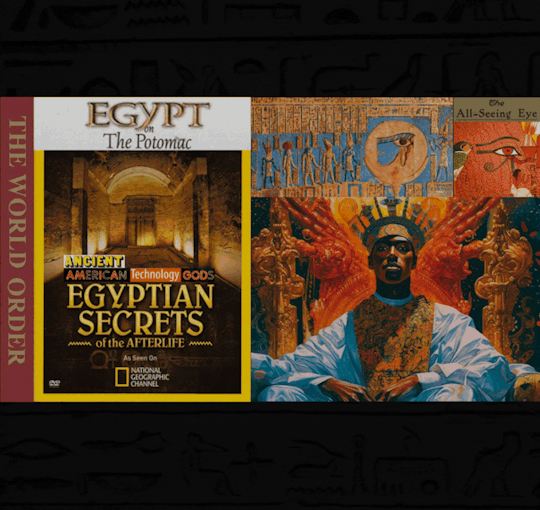


Queen Tiye ain't dead... Mother Never Died

we never die
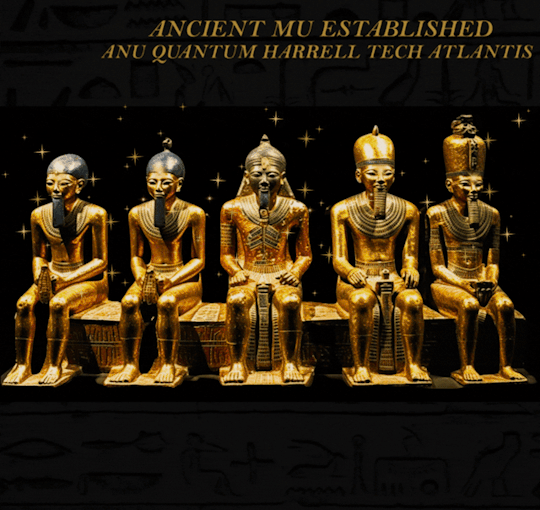
what is illusionary death 2 an immortal?!?!?!
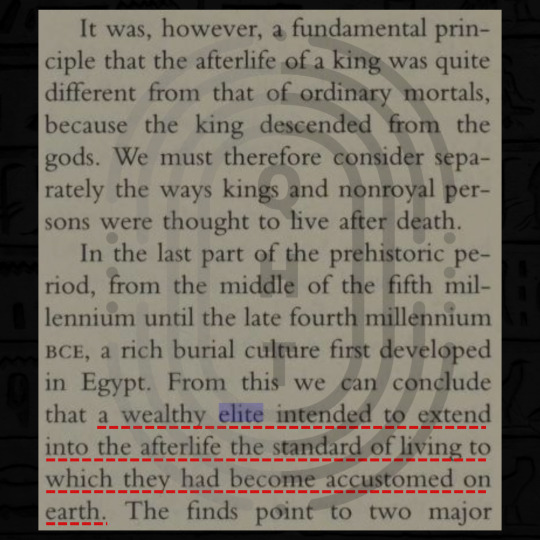
eye 2 wealthy 2 bee a poor righteous teacher

extremely wealthy 1968-michaelharrelljr.com domain creator [d.c.] is preforming this cyber death ritual to perpetuate harrelltut.com's memorial cults and to provide for our supreme mortuary priests in atlantis [pa] & lemuria

kingtutdna.com's domain creator [d.c.] ain't dead like you
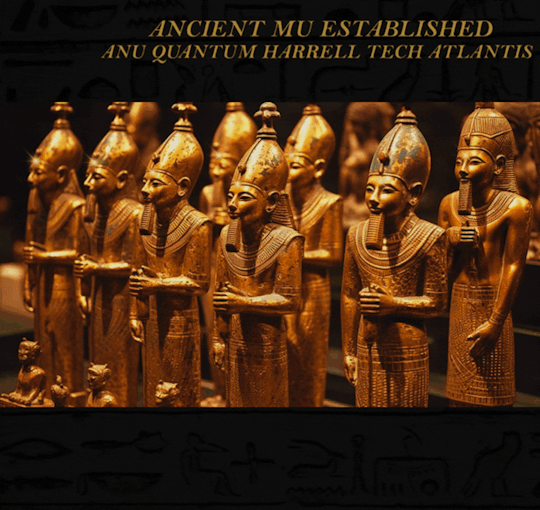
we still extremely wealthy in artificial 2023... moor than you can imagine

write it down... since iscribealot.com!!!

my cosmic 9 ether memory dna of atlantis & lemuria on fleek!!!
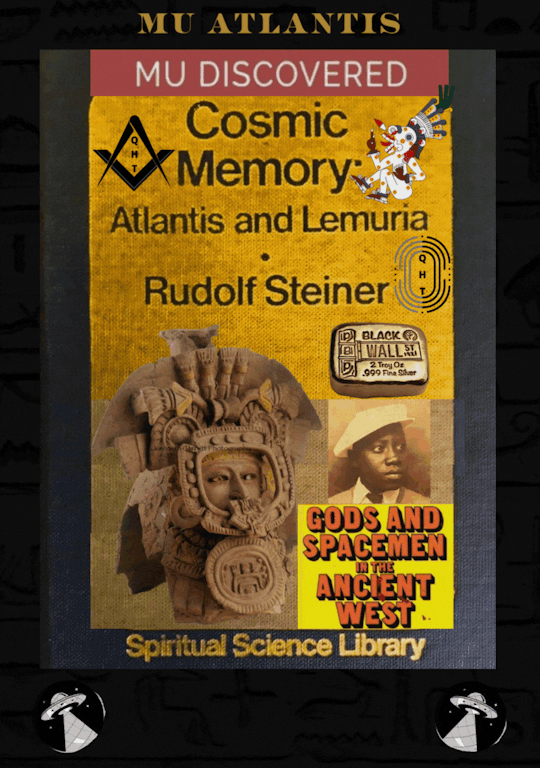
oh sky lord michael of esoteric [me] atlantis [ma] memories of us [mu] ægiptians [me] in lost [fallen] america!!!

do you remember the time???... mj remembered

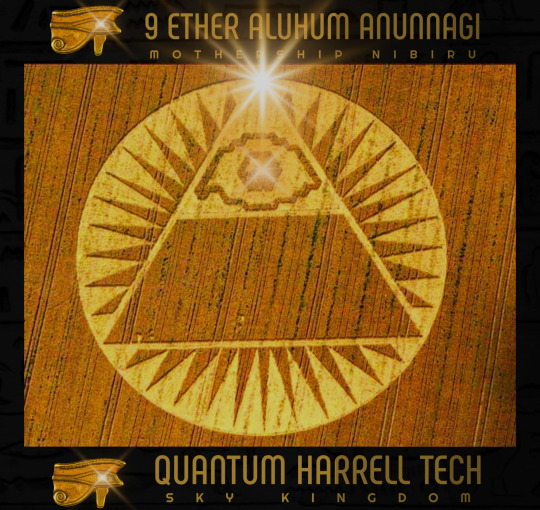
© 1698-2223 QUANTUM HARRELL TECH LLC All LOST ANCIENT [L.A.] ATLANTEAN DNA [A.D.] DotCom [A.D.] + DotTech [A.D.] + Pre 1698quantumharrellgov.tech Domain Name Rights Reserved... since WE ANU GOLDEN ERA [AGE]!!!
#u.s. michael harrell#king tut#queen tiye#mu:13#kemet#quantumharrelltech#quantumharrelltut#ancient 9 ether hittites hurrians harrells
3 notes
·
View notes
Text
Hurrian hymn my beloved ♡
1 note
·
View note
Note
... Also Worst Road Trip I am Invested
The Golden-king did not seem at all concerned about the mood of the Elf, so I tried not to be either. He is wise beyond all others, of course. (I do not take part in the debates over whether “all others” includes His husband, because I like my tongue attached.) He did not let go of the Elf’s arm until he was in the royal carriage - which I had never seen anyone but the kings enter (except to clean it) - and He immediately entered after him.
#gem writes#silvergifting#aran morinorea#the worst road trip#maglor#im getting attached to this oc now actually wait#shes so competent and what does it get her? more work#i need to go back to that list of hurrian names
12 notes
·
View notes
Text
Because I'm a history nerd filled with useless knowledge that I am duty-bound to share -
The oldest known piece of written music is currently the Hurrian Hymn h6. Written to the goddess Nikkal, it was discovered written in cuneiform in the city of Ugarit (Canaanite/Amorite) and dates to roughly 1400 BCE. Here's an excellent rendition of it with original instruments:
youtube

maybe i am too old for tiktok
190K notes
·
View notes
Note
mountain deities! tell me everything you know about them!
I was just reading one of the articles you made about a mountain god who was worshipped in an area far away from the mountain he personified and I was wondering.....
were mountain deities worshipped or "combined"/syncrestised with other similar mountain deities? or did the worshippers themselves associate the deities with any region or role they "personally" wanted?
also what exact role did these deities fulfil? were these deities worshipped for safety while crossing the mountain itself for an example ? or did the worshippers view mountains as generally sacred?
To the best of my best knowledge we have precisely 0 evidence for syncretism between individual mountain deities, which I think makes sense, since their core characteristic was usually tied to a single specific place whose name was identical with theirs. It really does seem to boil down to perceiving specific places as numinous due to unique factors in each case, even in the principle behind the worship of mountains was the same across a relatively large area.
We actually know relatively little about the individual character of many mountain deities but if Wilfred G. Lambert's theory about Ashur originating as one is correct then the answer to your question about assigning traits to them is "yes" at least in this case.
The primary role of mountain deities, at least as argues by Volkert Haas and Piotr Taracha, essentially just boiled down to some places being innately numinous and either suitable as a place of residence for gods or divine in their own right (or both). They both point out the link between mountains and weather deities as a factor - this one goes back to Ebla texts at least.
I have not seen any evidence for mountain deities being responsible for safe passage - there are prayers of that sort from Mesopotamia but they tend to invoke usual benevolent and/or apotropaic deities most of the time (ex. Shamash). It needs to be stressed that mountain deities were worshiped in Anatolia, across northern Syria (but not really in Ugarit for the most part - Mount Saphon was just the residence of deities) and in Upper Mesopotamia, but in lower Mesopotamia this was a rare phenomenon, and mountains, if personified, could be portrayed as antagonistic forces instead.
24 notes
·
View notes
Text



A few familiar faces that will get new new designs in Fragment of Pan:
-Kumarbi, the former Hurrian king of gods.
-Mastema, the evil angel.
-And Sobek, crocodilian protector deity of the river Nile.
#Hurrian Mythology#Mesopotamian Mythology#Abrahamic Mythology#Egyptian Mythology#Angelology#Demonology#Kumarbi#Mastema#Sobek#RPG Maker#indie games#Fragment of Pan#oc
5 notes
·
View notes